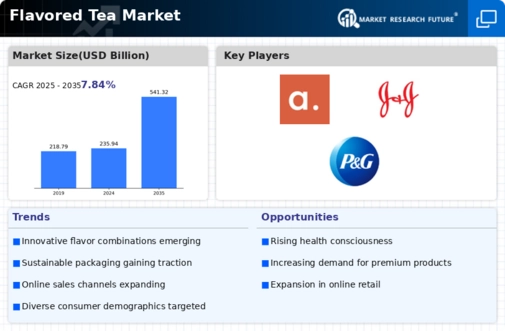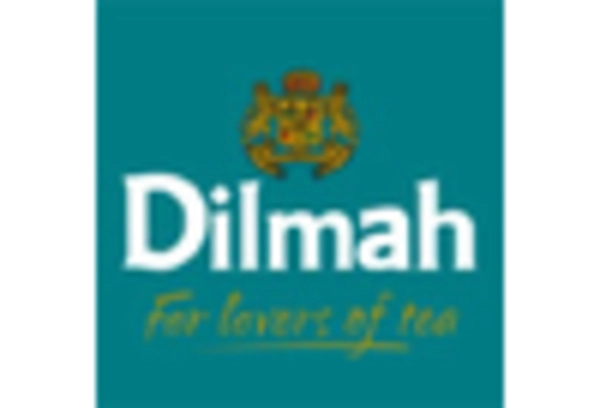Market Analysis
In-depth Analysis of Flavored Tea Market Industry Landscape
The flavored tea market represents a dynamic and evolving segment within the beverage industry, influenced by a range of factors that collectively shape its dynamics. A key driver for the market is the increasing consumer interest in diverse and unique taste experiences. As individuals seek alternatives to traditional tea flavors, the demand for flavored teas has witnessed significant growth. Whether infused with fruits, herbs, or spices, these variations offer consumers a refreshing and flavorful twist to the classic tea experience, appealing to a wide audience. Health and wellness considerations are pivotal in shaping the market dynamics of flavored tea. As consumers become more health-conscious, they are drawn to beverages that not only provide a delightful taste but also offer potential health benefits. Flavored teas often incorporate natural ingredients known for their antioxidant properties and potential health-promoting effects. This health-centric approach contributes to the market's growth, as consumers look for enjoyable ways to incorporate wellness into their daily routines. Changing consumer preferences and lifestyle trends play a significant role in the dynamics of the flavored tea market. With an increasing focus on diverse and premium taste experiences, consumers are exploring unique tea blends and flavors. The market responds with a variety of options, from traditional blends like Earl Grey with bergamot to innovative combinations like hibiscus and ginger. This adaptability to evolving preferences contributes to the dynamic nature of the flavored tea market. Globalization and cultural influences also impact the flavored tea market dynamics. The exchange of culinary traditions and tastes across borders has led to the introduction of diverse flavors and blends inspired by different cultures. Consumers are now exposed to a rich tapestry of global tea varieties, influencing their preferences and expanding the market's offerings. This cross-cultural exchange contributes to the dynamic flavor profiles available to consumers, making the flavored tea market more diverse and inclusive. The competitive landscape is a crucial factor in determining the market dynamics of flavored tea. Established tea brands often leverage their heritage and invest in product innovation to maintain and expand their market share. Simultaneously, new entrants and specialty tea companies focus on creating unique blends and engaging packaging to capture niche markets. This competition fosters creativity, leading to a continuous influx of new and exciting flavored tea options to meet diverse consumer tastes. Supply chain dynamics, including sourcing and packaging, influence the overall dynamics of the flavored tea market. The quality and origin of tea leaves, herbs, and flavoring agents impact the taste and authenticity of the final product. Additionally, there is a growing demand for sustainable and eco-friendly packaging, reflecting consumer concerns about environmental impact. Manufacturers need to adapt their supply chains to align with these changing preferences and emphasize responsible sourcing and packaging practices. Consumer education and awareness campaigns play a significant role in influencing the market dynamics of flavored tea. As consumers become more informed about the health benefits, sourcing practices, and cultural significance of different teas, their purchasing decisions are influenced by factors beyond just taste. Manufacturers engage in transparent communication, providing information about the origin of tea leaves, the naturalness of flavorings, and sustainable practices to build consumer trust.

















Leave a Comment